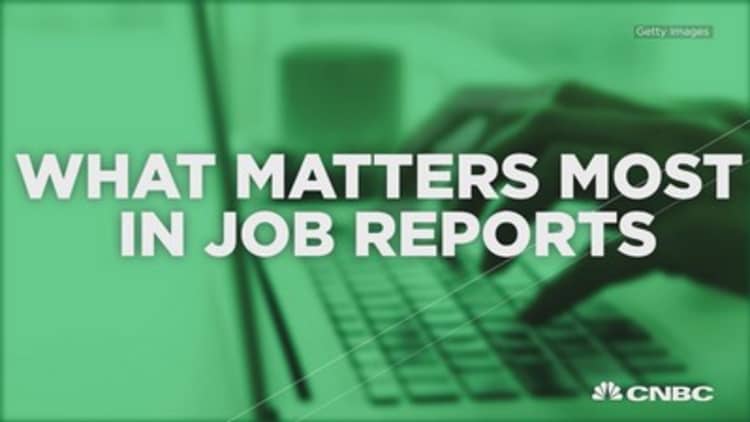July's steady jobs growth and stable unemployment rate are a formula that allows the Fed to move toward a rate hike this year, and the odds of that happening in September just got better.
Nonfarm payrolls for July packed no surprises, coming in at 215,000, slightly below Reuters forecast for 223,000 but close to other estimates. The unemployment rate was unchanged at 5.3 percent and average hourly wages grew modestly at 0.2 percent, or 2.1 percent on a yearly basis.
"Using the Fed's own language—'it's good enough to give us improvement in the labor market,' but not strong enough to end the debate," said John Briggs, head of strategy at RBS. The market has been fixated on each headline to determine whether the central bank will raise rates for the first time in nine years this September, or wait until December or later.
Read MoreU.S. jobs posts solid gains, creates 215,000 payrolls

RBS data show that the futures market is now reflecting that the odds of a September rate hike shifted to 55 percent, from 47 percent before the jobs report, and the first full rate rise is priced into December, as opposed to January, Briggs said.
The Fed's timing now hinges on several other key reports most especially the August employment report on Sept. 4. Economists are also watching CPI inflation reports and next week's July retail sales. While steady, the jobs gains were still below trend—which has been running at 246,000 jobs a month for the past 12 months.
"It's solid, but not spectacular. Whatever you thought at 8:29 a.m., you thought at 8:31 a.m. It didn't move the needle much. If the Fed is hung up on wages, this is not going to help them. They're already satisfied with the labor market. They're good with it," said LPL Financial economist and market strategist John Canally.
The Treasury yield curve instantly flattened, with the two-year yield rising to 0.74 percent and the 10-year yield holding steady around 2.22 percent. That move reflects expectations for Fed rate hikes, with the short end of the curve the most sensitive to central bank policy. Stock futures initially sold off and then moved higher, and the dollar was up.
"We're not stomping our foot on this but with the headline better than expected, the internals are better than expected, it makes sense that you're seeing a little bit more pressure towards rate hikes," said Briggs. He said average hours worked were positive, edging higher by a tenth of a percent to 34.6, but the aggregate hours index gained 0.5 percent, the best improvement since October.
"You have more people working and working longer hours," he said.
Wage gains, which have been a concern for the Fed, were slight but consistent with recent months and better than the flat result in June's report.
Read MoreFed has no excuses: Economists
The labor force participation rate was unchanged at 62.6 percent, after declining by 0.3 percent in June. Retail workers increased by 36,000, and professional and technical services gained 27,000. A bright spot was 15,000 new manufacturing jobs, the best increase since the beginning of the year.


